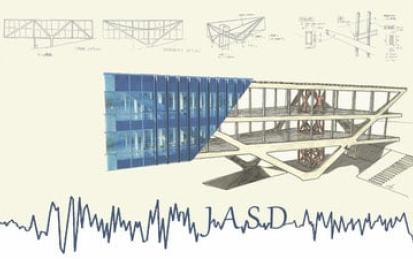

Our Courses

Governance for Transboundary Freshwater Security
This course provides understandings of transboundary freshwater governance in theory and practice. Topics include transboundary freshwater security, international water law, water diplomacy, negotiations, institutions, management tools, and sustainable finance.
-
Course by

-
 Self Paced
Self Paced
-
 English
English

From the Ground Up: Managing and Preserving Our Terrestrial Ecosystems
How can we preserve, restore, manage and sustainably use terrestrial ecosystems? Join us as we explore this question in the Brazilian Amazon and around the world.
-
Course by

-
 Self Paced
Self Paced
-
 English
English

Work and Employment for a Sustainable Future
We are living in a financially fragile world. There is economic growth, but not enough opportunities to find decent work. Globally, more than 200 million people are still unemployed, but there has been progress in standards of labour and work. This is not sustainable. Learn from experts from the International Labour Organization, Harvard University, and more about the state of work in our world, and what it will take to ensure steady, inclusive and sustainable economic development for all.
-
Course by

-
 Self Paced
Self Paced
-
 English
English

Water: Addressing the Global Crisis
We are living in a water stressed world. It is a global crisis and therefore we must act now! What can we do to save the planet and ensure availability of water for all by 2030?
-
Course by

-
 Self Paced
Self Paced
-
 English
English

The Rise of Superheroes and Their Impact On Pop Culture
EXCLUSIVE! When you complete a verified certificate in this course, you will receive digital artwork from a current comic book artist.
-
Course by

-
 Self Paced
Self Paced
-
 English
English

Consumer Psychology in the Financial Industry
Financial Marketing Psychology is about comprehending the nuances of human behaviour and howhumans behave to marketing stimuli, nudges and situations.
-
Course by

-
 Self Paced
Self Paced
-
 English
English

Influence Essentials for Leadership and Marketing
Discover ‘Influence’– the attribute that can affect emotions and sway individual or group actions. Recognize the subtleties of this attribute and develop the skill to use this understanding to manage people and market to people.
-
Course by

-
 English
English

Content Marketing Strategy
Content Marketing strategy encompass the creation and promotion of relevant contentthat attracts, engages and drives profitable customer actions in the digital medium.
-
Course by

-
 Self Paced
Self Paced
-
 English
English

Unlocking Information Security I: From Cryptography to Buffer Overflows
Learn how systems are hacked and defended.
-
Course by

-
 English
English

Viruses & How to Beat Them I: Introduction to Cell Biology & Viruses
Whereas cells are alive, viruses are not. Discover how living cells translate information coded in our genes into proteins and what happens when viruses hijack our cells and cause life threatening diseases.
-
Course by

-
 Self Paced
Self Paced
-
 English
English

Viruses & How to Beat Them II: Immunology Fundamentals & Applications
When we are attacked by viruses our bodies are not left helpless. Discover how our immune system fights infectious diseases, how vaccines protect us and how immune mechanisms have been implemented in our fight against Coronavirus.
-
Course by

-
 Self Paced
Self Paced
-
 English
English

Introduction to Computer Numerical Control
Learn how The Introduction to Computer Numerical Control (CNC) Machining enables computers to control manufacturing tools and how to select, program and operate a CNC machine.
-
Course by

-
 English
English

Introduction to Oil Country Tubular Goods (OCTG)
This course introduces the main criteria to consider when selecting pipe products to assure oil well integrity and mitigate risks.
-
Course by

-
 Self Paced
Self Paced
-
 English
English

Introduction to Running Pipe in Oil and Gas Wells
Learn about the importance of proper preparation and handling of casing and tubing used in oil and gas wells.
-
Course by

-
 Self Paced
Self Paced
-
 English
English

Introduction to Steel
Explore the science, history, industrial and cultural significance of steel.
-
Course by

-
 Self Paced
Self Paced
-
 English
English

Japanese Architecture and Structural Design
In this revised course, fundamental and modern approaches to Japanese structural design will be explained using historical overviews and Tokyo-Tech’s campus buildings as case studies. Learners will be able to interpret and apply seismic design concepts like energy-dissipating braced frames, spine frames, seismic retrofit, seismic isolation and seismic design of spatial structures.
-
Course by

-
 Self Paced
Self Paced
-
 English
English

Introduction to Business Architecture
In this course, you will learn the concepts of mapping a business architecture by using the representative methodology called DEMO (Design & Engineering Methodology for Organizations) as explained in the book, Enterprise Ontology.
-
Course by

-
 Self Paced
Self Paced
-
 English
English

Introduction to Computer Science and Programming
The term “Computation” refers to the action performed by a computer. A computation can be a basic operation and it can also be a sophisticated computer simulation requiring a large amount of data and substantial resources. This course aims at introducing learners with no prior knowledge to the basic key concepts of computer science. By following the lectures and exercises of this course, you will gain an understanding of algorithms by programming using the language Ruby.
-
Course by

-
 English
English

Basic Japanese Civil Law
Learn Japanese Civil Law, covering various contemporary issues faced in everyday life.
-
Course by

-
 Self Paced
Self Paced
-
 English
English

Basic Japanese Civil Law 2
This course is in succession to the TokyoTechX "Basic Japanese Civil Law," which covered legal concepts common to many countries, such as sovereignty, constitution, separation of three powers, basic human rights, and personal safety. This course considers current issues in Japan, such as those faced in daily life from a legal perspective based upon laws and related methods. This course teaches Japanese civil law in more detail related to contemporary problems.
-
Course by

-
 Self Paced
Self Paced
-
 English
English

Monozukuri: Making Things
Learn the Japanese concept of Monozukuri: the art of "making things" starting with the philosophy including lectures from Tokyo Tech faculty, various examples from Japanese Industry, and the Tokyo Tech student clubs. In addition, the principles of experiental learning are also introduced.
-
Course by

-
 Self Paced
Self Paced
-
 English
English

Introduction to Software Side Channels and Mitigations
Side channels exist in the real world, but they also exist in computers and can be exploited directly from software. This is a substantial computer security problem today, that we need to learn about to be able to stop attacks. In this course, you will learn and practice basic software-based side channels and understand the thought process to utilize a side channel. You will then learn how to mitigate or avoid side channels in software.
-
Course by

-
 Self Paced
Self Paced
-
 English
English

Cache Side-Channel Attacks and Mitigations
Software-based side-channel attacks can pose a severe security threat in practice. In this course, we focus on a particularly prominent case: caches and cache side-channel attacks and we will go beyond the basic Flush+Reload attack. You will work with different cache side channels and understand where timing differences in architectures originate. You will learn which mechanisms can mitigate specific side-channel techniques in practice.
-
Course by

-
 Self Paced
Self Paced
-
 English
English

Physical and Advanced Side-Channel Attacks
Software-based and physical side-channel attacks have similar techniques. But physical attacks can observe properties and side effects that are usually not visible on the software layer. Thus, they are often considered the most dangerous side-channel attacks. In this course, we learn both about physical side-channel attacks but also about more advanced software-based side channels using prefetching and branch prediction. You will work with these attacks and understand how to mitigate them.
-
Course by

-
 Self Paced
Self Paced
-
 English
English

Transient-Execution Attacks: Understanding Meltdown and Spectre
Beyond software-based side-channel attacks there is a new class of attacks called transient-execution attacks. These attacks go beyond leaking meta-data and directly retrieve secret data but they use side channels as an data exfiltration mechanism to transmit the secret data to an attacker-controlled application. We will look at the most prominent of these attacks: Meltdown, Spectre, Foreshadow, and ZombieLoad. You will implement some of these attacks yourself and learn how to mitigate them.
-
Course by

-
 Self Paced
Self Paced
-
 English
English



